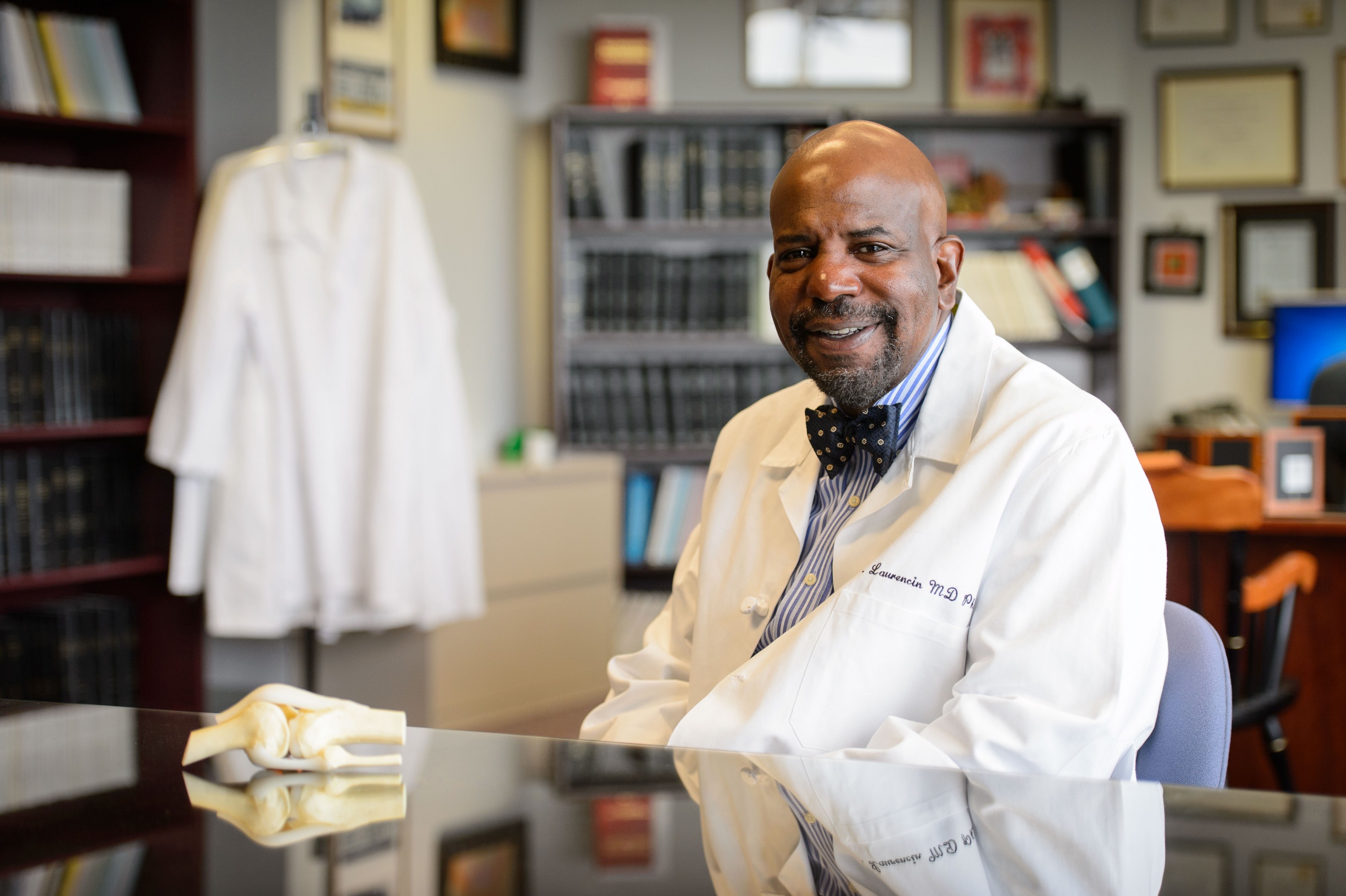On Veterans Day, the University of Connecticut announced the launch of its new grand research challenge: regeneration of a human knee within seven years, and an entire limb within 15 years.
This major international research undertaking, called The HEAL Project, stands for Hartford Engineering a Limb. It is the brainchild of UConn Health’s Cato T. Laurencin, a leading surgeon-scientist in orthopaedic surgery, engineering, and the new field of regenerative engineering. His laboratory research successes include the growth of bone and knee ligaments.
For the project, Laurencin is teaming with other top tissue engineering, regenerative medicine, and bioengineering experts dedicated to the mission of advancing the fields and developing future therapies for patients living with musculoskeletal defects or who have limb injury or loss. HEAL’s other research investigators include Professors Lakshmi Nair and Yusuf Khan of UConn, Professor David M. Gardiner of UC Irvine, professors at Harvard University, Columbia University, and Sastra University in India.

To accelerate the project’s mission, the research investigators initially will be supported by 10 dedicated research fellows and a collaborative team of scientists and clinicians in engineering, orthopaedic surgery, plastic surgery and rehabilitation medicine from across UConn and UConn Health. And, new clinical and research alliances will be formed with other national and international experts from across science, technology, surgery, and medicine.
“The launch of the HEAL Project is a transformative moment for science and medicine,” says Laurencin. “This is the first international effort ever for knee and limb engineering. The time is now to pursue this much needed super, grand challenge to benefit those patients suffering from debilitating knee injuries, osteoarthritis, or affected by the devastating effects of limb injury or loss, such as our military heroes wounded in combat.”
Looking Towards the Future
According to Laurencin, other patients who could benefit from the future breakthroughs are those with amputations due to bone cancer, diabetes, dangerous infections, trauma accidents, or even children born with missing or impaired limbs.
“It is a new dawn for regenerative engineering,” stresses Laurencin. “Our research group will harness the concepts of convergence, bringing together our talents, latest scientific knowledge, research advances, and cutting-edge tools to help make our grand challenge of knee and limb regeneration a reality.”
Laurencin projects that it will take seven to 15 years for first knee and then limb regeneration breakthroughs based on the time it took for him to successfully regenerate bone and ligaments. To work toward its milestones, HEAL will be building upon the latest advances in regenerative engineering, tissue regeneration, stem cell research, nano-materials science, physics, developmental biology, and advanced manufacturing. In addition, researchers will conduct clinical trials to test any new promising therapies.
“This research initiative will be a game-changer for regenerative therapies,” says Laurencin.
The HEAL Project’s launch is supported by Laurencin’s recent $4 million Pioneer Award from the National Institutes of Health for his research in regenerative engineering, as well as his grant award from the National Science Foundation for Emerging Frontiers in Research and Innovation. Important support also comes from The Raymond and Beverly Sackler Center for Biomedical, Biological, Physical and Engineering Sciences at UConn Health, which Laurencin founded and directs.
Laurencin serves as director of The Institute for Regenerative Engineering and the Albert and Wilda Van Dusen Distinguished Professor of Orthopaedic Surgery at UConn Health. In addition, he is a professor of Chemical and Biomolecular Engineering, Materials Science and Engineering, and Biomedical Engineering, and also the eighth University Professor to be named in the school’s history. He is also the chief executive officer of the Connecticut Institute for Clinical and Translational Science (CICATS) at UConn, and an elected member of the National Academy of Medicine and an elected member of the National Academy of Engineering.
Research progress of HEAL and other similar projects will be published in the new journal Regenerative Engineering and Translational Medicine, where Laurencin is the editor-in-chief.



